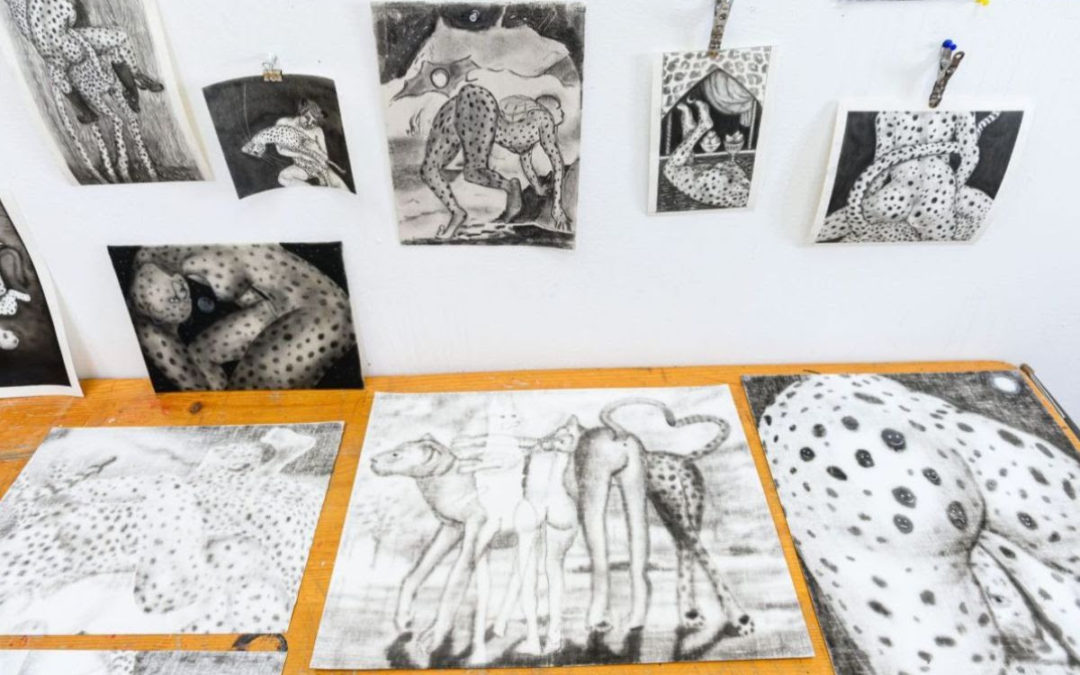In light of all that is going on in Iran, we reached out to a couple of our Iranian Fellows, Bahar Sabzevari (CRF 2021) and Yasmin Golshani (CRF 2005), to ask them about this historic moment and how it has affected their work.
What is your perspective on the protests in Iran?
Bahar Sabzevari: A woman-led movement is happening in Iran— and for the first time, Iranian men support women’s demands because they’ve become aware of how the totalitarian Islamic regime suppresses the rights of all people. Iranian women have managed to galvanize the society at large to understand the intersectionality of gender equality and other basic human rights. The death of Mahsa Amini, a Kurdish-Iranian woman, had a middle-class component as well as an ethnic minority element to it. Iranians are banding together with an understanding of LGBTQ+ rights, gender and class equality, and ethnic minorities’ rights. Everything is connected. The brave, heartwarming energy of this movement brings hope not only for the future of Iran but also for that of the Middle East and the world. A positive move towards freedom in one part of the globe can impact the whole world.
Yasmin Golshani: Iran is a country where the young generation makes up a majority of the population. They want change. I believe that these protests were predictable, and will lead to the separation of religion and the state. Every word of the slogan of the people – “Woman, Life, Freedom” – strongly states this desire. As someone who was eleven years old at the time of the Islamic revolution and spent her youth facing religious persecution, oppression, and discrimination, I feel honored to be part of these protests.
How has the movement and demand for rights impacted your work?
BS: The German philosopher Adorno once said that every work of art is an uncommitted crime, in the sense that art can be used to change situations. Like most artists, I try to show social and political conditions in my work and bring the world’s attention to those subjects. My new series of drawings, “We are Victorious” ( ما،پیروزیم), uses the cheetah as a metaphor of hope for a better future for the Iranian people. Victor (Pirouz in Persian) is a famous cheetah cub in Iran because he was born in captivity in an effort to save vulnerable Asiatic cheetahs from extinction; Pirouz has become a symbol of victory for the revolution.
YG: After leaving Iran in 1996 and immigrating to Paris, I watched the political and social issues in Iran from a distance and gained a wider, deeper outlook. I have always had a critical point of view of issues in Iran, and I create from that perspective. My first series “Women” expressed my views against mandatory hijab through paper-mâché with Persian newspapers. Other series include “Eyes,” which reflected on self-censorship, as well as “Boxes,” “Knots,” “War,” “The City of Tehran,” and “Twins,” made in large part at Civitella in 2005. Recently I’ve begun a series called “Woman, Life, Freedom” in which I revive the memory of 100 deceased influential women in culture and politics from Iran and around the world. I have started to work on a second series with the same theme but with living women who are the voice of the current movement.
What do you want our readers to know about the movement? How can others help?
BS: For the first time, Iranians are united under one goal within and beyond Iran. The goal is “woman, life, freedom”: a free Iran, where the door would be open for the world to share in Iran’s rich culture and to create peaceful relationships. Messages from Iran’s young generation are very clear: they want huge change, not just an improvement to the current system. They are on the streets being arrested and shot every day, even being executed for speaking against the regime. Art is a powerful tool for social awareness. As artists, we can create work and share other artists’ work to amplify the voices of the people of Iran who are risking everything for a better tomorrow. I urge the art world to keep the momentum up and to continue to support us. We still have a long way ahead but the movement has a strong message for the world: the Iranian people want a secular democratic system.
YG: In recent weeks, the brutal Islamic regime in Iran has used shotguns against protesting women, men, and children, hitting them and blinding them. There have been many illegal and inhumane executions, and an estimated 20,000 protesters have been arrested or imprisoned. Protests continue with slogans and banners, and peaceful demonstrations in cities outside of Iran. We can help the people of Iran by being their voice: by talking about these issues, and by sharing and spreading the news. The more the news spreads, the more politicians and international organizations will be forced to realize that the regime must change. People in power can pressure the regime and help the Iranian people make the best transition to democracy.

